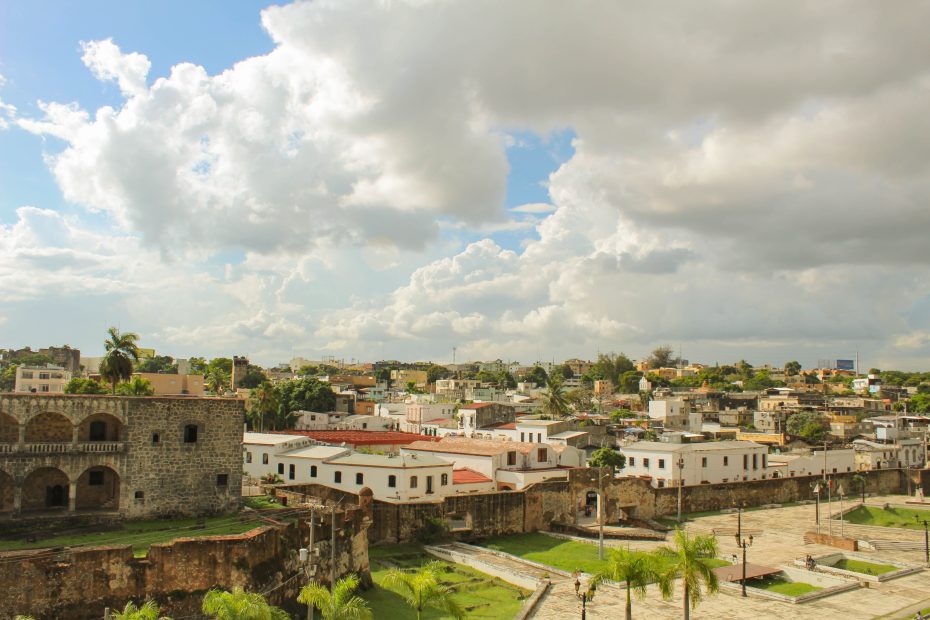Gathered like gems along the rugged coastline of Sao Tome, the island nation’s historic buildings offer a window into its richly layered past. With their faded facades and timeworn walls, these structures reveal the complex interplay between Portuguese colonizers, enslaved Africans, and contract laborers from such far-flung locales as Angola, Cape Verde, and Mozambique who were brought to work the sugar and cocoa plantations.
Table of Contents
The Portuguese Colonial Period
Portugal claimed São Tomé and Príncipe in the late 15th century, promptly turning it into Africa’s first colonial plantation economy. Over the centuries of Portuguese rule that followed, the colonists crafted structures in the Baroque, Manueline, and later Neoclassical styles popular in the motherland. available materials like volcanic rock and local wood were incorporated, as were African and Caribbean motifs. This blend gave rise to a distinctive Afro-Portuguese style.
Notable Colonial-Era Buildings
Forte de São Sebastião, perched on a promontory overlooking the capital, dates to the mid-16th century. With its imposing stone ramparts and panoramic views, this UNESCO World Heritage Site vividly evokes the Portuguese stronghold.
The imposing pink Presidential Palace was built in the late 19th century as the governor’s residence. Its columned portico and decorative flourishes reflect the Neoclassical aesthetic.
Intricately carved wooden altars, azulejo tilework, and eclectic elements like African mukumbi carvings grace cathedrals and churches like São Sebastião, São José, and Nossa Senhora da Graça, offering a baroque vision of Iberian religious art.
Unique Blend of Styles
Looking closer, Sao Tome’s structures reveal diverse influences at play. Window pediments curve in a style reminiscent of Cape Verde. Walls of volcanic basalt evoke island ingenuity. The bright chitas fabrics women wear as headscarves bring color. And rooftops made of palm fronds bespeak indigenous materials.
Walking Sao Tome’s streets is to witness a blended culture emerge in material form. The buildings stand as testament to early globalization, as African, European, and New World cultures forged a syncretic mode of expression.
Preserving Historic Structures
Many of Sao Tome’s historic buildings have fallen into disrepair, succumbing to humid tropical air, termite damage, and lack of upkeep. But new restoration efforts aim to save these touchstones before it’s too late.
Organizations like Portuguese NGO Restore seek careful methods that honor the craft and origin of older materials. But funding constraints, lack of local training in preservation, and development pressures continue to pose challenges to maintaining historic integrity.
Looking to the Future
As Sao Tome debates how to balance preservation with modernization, its architectural heritage stands poised between resurrection and ruin. The island’s complex history underlies each sun-bleached facade, every lichen-mottled wall. Will future generations still discern the diverse cultures woven into these structures?
Sympathetic adaptive reuse, careful restoration, and preservation policies represent keys to safeguarding Sao Tome’s built history. If engaged sensitively, the island’s old structures can help forge connections to the past while transforming to meet contemporary needs. Whatever path is chosen, one hopes these buildings will continue casting colonialism’s contradictions into stark relief.
Conclusion
From imposing forts to baroque churches, Sao Tome’s architectural treasures offer rare insight into both Portuguese colonial history and the blended culture that arose there. As pressure builds between preserving heritage and pursuing progress, the island nation will need to find a delicate balance that honors its multi-layered past while moving into the future. With careful effort, the colonial buildings can stand both as monuments to difficult history and living links between past and present.
FAQs:
What time period is represented by Sao Tome’s colonial architecture?
Sao Tome’s extant historic buildings largely date from the 16th through 19th centuries, when Portugal colonized and heavily exploited the islands. Structures were built using African and New World influences alongside Portuguese styles.
What are some of the landmark buildings of the colonial era?
Notable structures include Forte de São Sebastião, the Presidential Palace, the Cathedral of São Sebastião, São José Church, and Nossa Senhora da Graça Church, among others. Many blend Baroque and Neoclassical styles with local materials.
What unique blend of styles is seen in colonial buildings?
Sao Tome’s old structures fuse Portuguese aesthetic styles with African motifs, materials like volcanic rock and palm wood, and influences from contract laborers from places like Cape Verde. This resulted in a distinctive Afro-Portuguese architectural mode.
Why do historic buildings need preservation in Sao Tome?
Humidity, termites, lack of maintenance, and development pressures have led many colonial buildings to fall into disrepair. Preservation combats erosion of historic heritage.
How can Sao Tome balance past heritage and future progress?
Careful restoration, adaptive reuse policies, preservation training, and sensitive development planning allow Sao Tome to modernize while safeguarding its layered history seen through colonial architecture.
